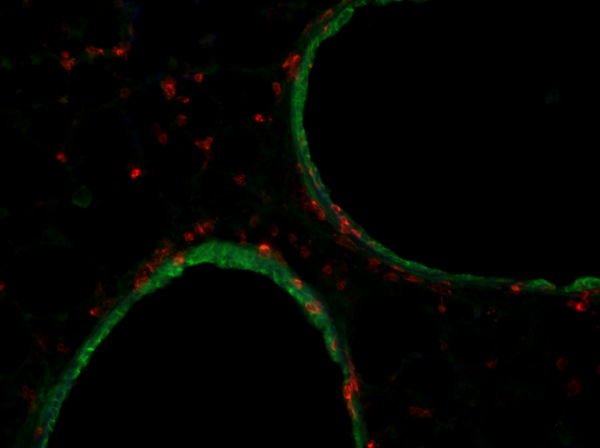URMC / Labs / Topham Lab / Projects / The Pivotal Role of VLA-1 in T Cell Immunity to Influenza
The Pivotal Role of VLA-1 in T Cell Immunity to Influenza
Optimal T cell mediated immunity to virus infection of peripheral tissues depends on the ability of the T cells to home to, function, and be retained in these sites. Because of the diversity in the structure and function of peripheral organs, a mechanism to regulate T cells in different organs must involve components shared by many tissues. A feature common to many tissues is the presence of extracellular matrix. Collagen IV is uniquely found in the basement membranes that form the foundation for all epithelial and endothelial surfaces. The receptor for collagen IV is the alpha-1 beta-1 integrin heterodimer, Very Late Antigen-1 (VLA-1). VLA-1 is expressed by subsets of activated and memory T cells of both the CD4 and CD8 lineages.

It is important for the maintenance of memory T cells in peripheral non-lymphoid tissues, especially the lung and other mucosal sites. More recently, VLA-1 expression was associated with localization of T cells in proximity to epithelial surfaces and in promoting their survival during the acute phase of infections. Thus not only can it function to maintain memory T cells, it also is important for protection of effector T cells during the acute response.

